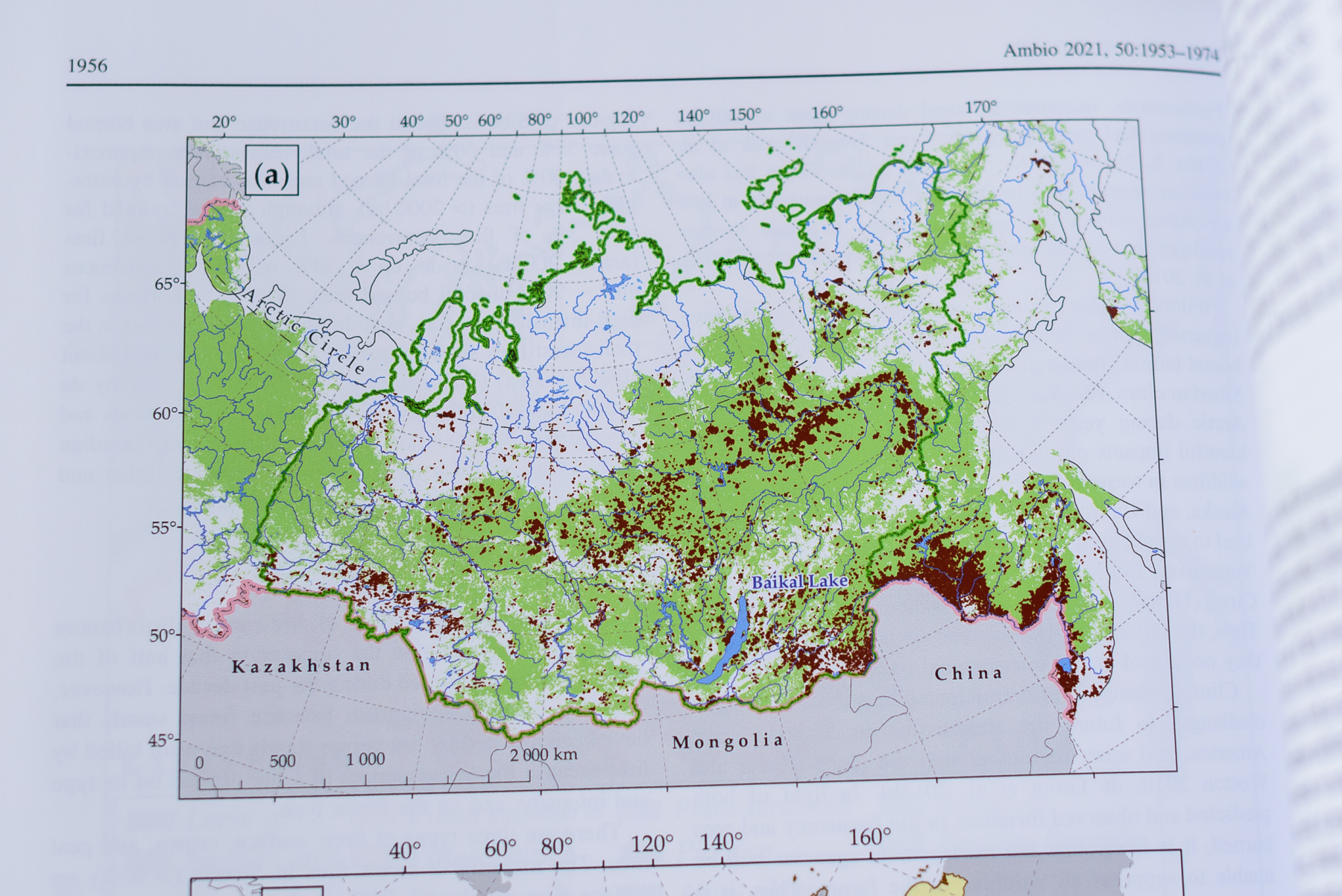Scientists in Russia and abroad have analyzed data on Siberian forest fires collected over the last 30 years and outlined the main reasons for the death of forests. They consider global warming and bursts of insect pests, which are expanding their habitat due to climate change, to be the key factors. The article “Wildfires in the Siberian Taiga”, which summarizes the findings of the research team, was published in a special issue of the highly ranked journal Ambio dedicated to climate change in Siberia, and took second place in the 2022 citation rankings compiled by Springer Publishing Company. The special issue was edited by TSU scientists Terry Callaghan, Sergei Kirpotin, and Olga Shaduiko.
“The article by our partners—who are members of the SecNet community—is dedicated to solving a problem that is considered to be of nationwide importance in countries with major forest cover,” explains co-editor Olga Shaduiko, SecNet coordinator at TSU. “Russian forests make up over 20% of the world forest distribution, more than half of it located in Siberia. And it is here, in the Siberian Federal District, that over 70% of Russian forest fires occurred. Plus, the fires have moved significantly to the north, and in Eastern Siberia they are coming close to the coast of the Arctic Ocean.”
As stated by the article's authors, in recent decades, the death rate of dark coniferous forests has increased after the recurrent severe droughts and accompanying insect attacks, which have led to increased numbers of damaged trees. Such trees are often very dry and therefore fire-prone. For example, the recent Siberian moth outbreak damaged more than a million coniferous trees in Western Siberia. Caused by global warming, the bark beetle (Polygraphus proximus) outbreak between 2003 and 2018, combined with severe droughts, led to the loss of almost 5% of fir-tree plantations, mainly in Southern Siberia.
Along with the increase in air temperature, climate change has led to greater numbers of severe droughts and periods of intense heat in Siberia. For example, the city Verkhoyansk in the Republic of Sakha, located north of the Arctic Circle, saw record high temperature (+38°C) in June 2020: the continuous heat caused numerous forest fires in the area.

The map of forest fires that occured between 2012 and 2019 provided by the article's authors shows that the highest burn rate was observed in Zabaykalsky Krai, followed by Central Yakutia, Southern Evenkiya, and the West Siberian Plain.
The analysis shows that more than 80% of forest fires in the Southern Siberia—the most populated area—were human-caused. The same scenario can be seen in other countries—including Canada, where about 50% of forest fires are anthropogenic. There is a clear pattern: the higher the population density and the more developed the infrastructure, the greater the number of forest fires.
At the same time, scientists emphasize that forest fires themselves are an important ecological process: for example, they are necessary to maintain the dominance of pyrophytic species (for example, larch and Scots pine) within their range. In addition, forest fires are a significant natural factor in maintaining biodiversity in the vast Siberian taiga. Another important aspect is that renewed young forests are active carbon sinks, as opposed to old forests that emit much more carbon than they absorb.
To learn more about the data analysis, including the data on how forest fires affect people and which trees are the most prone to burning, see the article “Wildfires in the Siberian Taiga”. The team of authors won silver in Springer's 2022 citation rankings; it includes Sukachev Institute of Forest of Russian Academy of Science's Siberian Branch scientists Vyacheslav Kharuk, Yevgeniy Ponomaryov, Galina Ivanova, and Maria Dvinskaya, as well as Mike Flannigan and Sean C.P. Coogan of the University of Alberta (Canada).
Taking the environmental changes in Siberia—a macroregion influencing the climate of the entire globe—as the main topic of the Ambio special issue and preparing it with SecNet won the contest dedicated to Ambio's 50th anniversary. The special issue covers the research results of about 90 authors from around the world.
As noted by the TSU scientist and invited editor of Ambio’s special issue, Terry Callaghan, Siberia is a canary in a coal mine. It is here that environmental changes that will largely determine the future of the planet for the next tens and hundreds of years are already clearly manifested. Humanity, which strives for sustainable development, needs to study the natural processes taking place in Siberia in order to solve problems related to food security and biodiversity conservation. This will help to understand many natural phenomena in other parts of the planet.
For reference: The journal Ambio (Q1) is published by the Royal Swedish Academy of Sciences, part of the Springer Nature Group. Ambio publishes research results related to the environment, including environmental economics, geochemistry, geophysics, human geography, hydrology, earth sciences, meteorology, and other subject areas. SecNet is an open community of universities, research institutes, and other organisations, teams, and individuals that are united by a common goal to support sustainable development of the North, including the Arctic, by accumulating experience and knowledge on Siberian environments and society to understand and predict societally important changes so that negative anthropogenic consequences can be minimised.